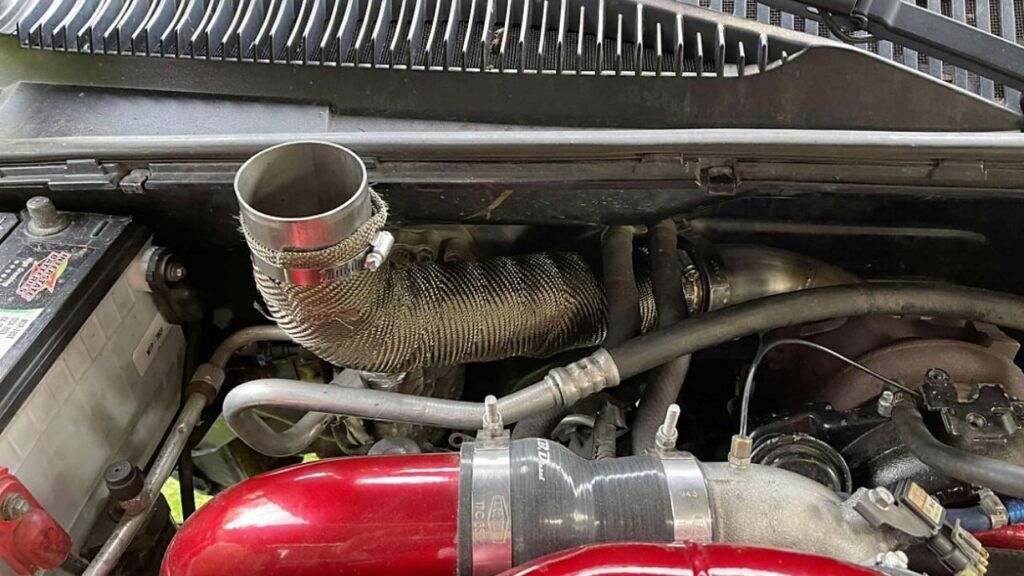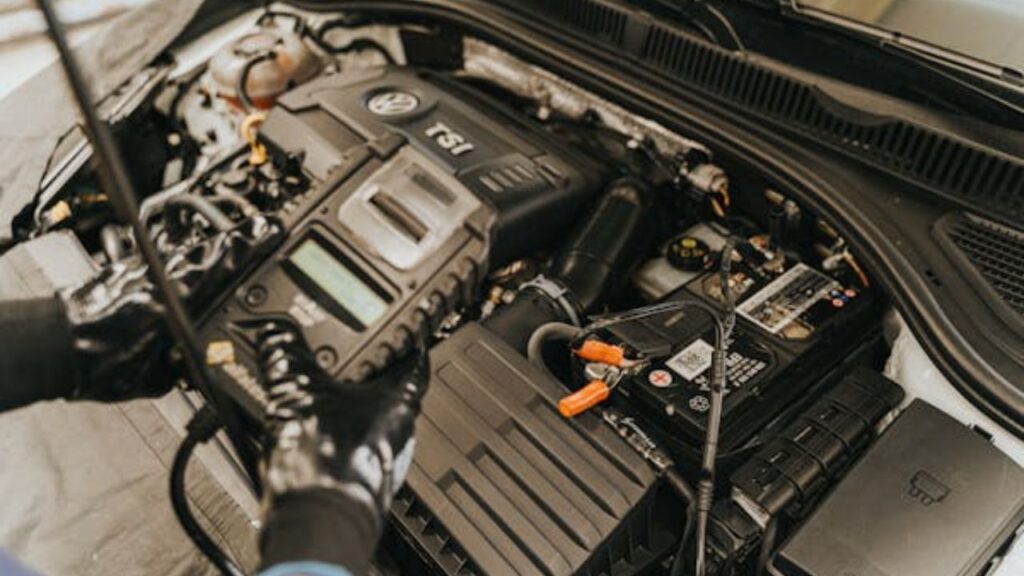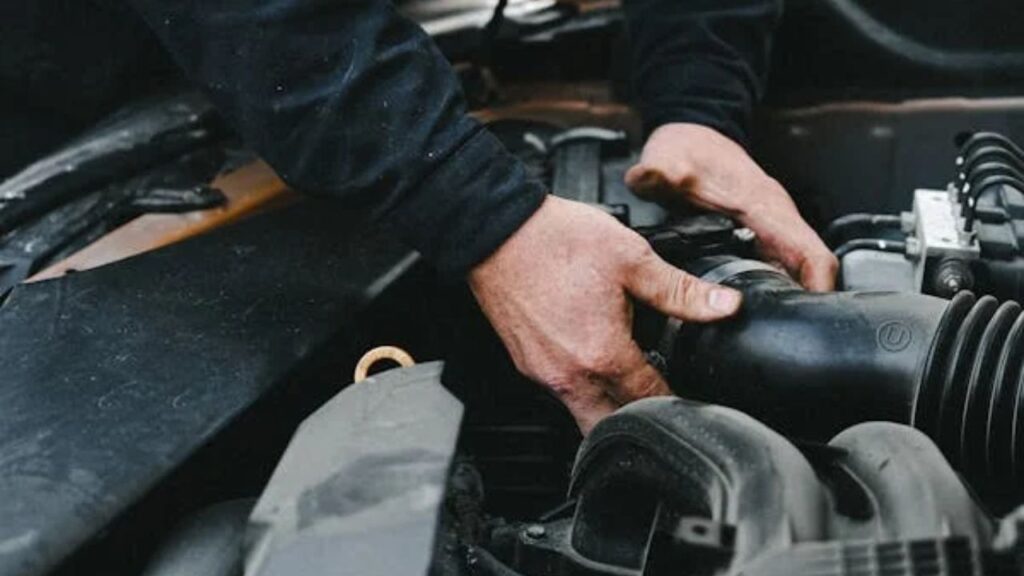Modifications to a car may greatly improve its look as well as performance. The hood stack is one clear improvement. Rising above the hood of the vehicle, a hood stack is an exhaust component that facilitates effective escape of exhaust gasses. This post will go over the advantages, installation technique, and maintenance of automobile hood stacks so that you may easily see how this change might enhance your car.

What Is a Hood Stack?
Often found on trucks and heavy-duty cars, a hood stack is an exhaust system that leaves via the hood instead of the back of the vehicle. This architecture improves airflow, hence lowering engine back pressure. Particularly in high-torque software, a hood stack can increase engine performance by allowing exhaust gasses escape straight from the engine compartment. Moreover, it presents the car in a tough and aggressive manner that many aficionados for cars find intriguing. This change improves the vehicle’s capability in difficult surroundings as well as its appearance. Diesel trucks, off-road vehicles, and even certain performance automobiles use hood stacks very often. Stainless steel and aluminum are among the several materials they may be built from; they provide corrosion resistance and durability. Additionally variable are the stack’s height and width, which let one customize depending on personal tastes and car specs. Knowing these traits assists drivers to value the reason behind the popularity of this change among car lovers.
Benefits of a Hood Stack
Install a hood stack for a number of benefits. It improves exhaust flow, so first and most importantly boosts engine performance. Particularly with diesel engines, this can result in more power and greater fuel economy. Dirt and trash are less likely to be drawn into the exhaust system, hence the vertical departure of the exhaust gasses helps maintain the undercarriage cleaner. Many drivers also find great attraction in the distinctive, richer and more resonant sound generated by a hood stack. Hood stacks can also help to increase visibility while off-road. A conventional exhaust gets blocked or damaged while negotiating rough or muddy ground. By raising the exhaust system, a hood stack guarantees that exhaust flows free and lowers the chance of blockage. For trucks and vehicles used in agricultural or construction environments, where dependability is crucial, this might especially be crucial. For many drivers, hood stacks are a reasonable choice overall given the mix of performance enhancements and practical advantages.
Types of Hood Stacks
There are numerous types of hood stacks here, each fit for different tastes and architectural style. The most generally used variations are straight stacks—which rise vertically—and angled stacks—which might be positioned at various angles for a customized look. Although tilted stacks might help a car’s aggressive posture, straight stacks have a timeless appeal. Different diameters and heights also let you choose a stack that matches the specs and aesthetic tastes of your car. While some hood stacks are made especially for off-road uses and have strengthened materials to survive demanding environments, others are made for street performance and concentrate on sound and appearance. The finish, whether powder-coated black or polished chrome, may also affect the car’s whole appearance. Knowing these choices will enable you to select the correct hood stack fit for your vehicle’s intended function and own style.
Installation Process for Hood Stacks
Although installing a hood stack seems difficult, it may be a doable do-it-yourself effort with the correct equipment and directions. You will first have to compile your supplies—that includes the stack itself, exhaust pipes, and required clamps. Start by removing the current exhaust system, being sure to follow manufacturer recommendations. Then, precisely locate and indicate on the hood where the stack will show up. This stage is absolutely vital for correct alignment and to stop car damage. Mark the area then make the hole in the hood using a suitable cutting instrument. This calls for accuracy as a badly made hole might cause problems down road. Exhaust clamps will help you to secure the stack in place and guarantee correct alignment after hole cutting. At last, link the stack to the exhaust system under the car so that all the connections are snug and leak-free. See a skilled technician if you lack confidence in your ability to guarantee appropriate installation and prevent any possible problems. Apart from appearances, a well-installed hood stack performs efficiently.

Maintenance Tips for Hood Stacks
Regular maintenance is required to keep your hood stack running as best it should once you have installed it. Start by constantly looking for any indicators of rust or corrosion, particularly if you frequently drive in hostile circumstances or in salted areas. Another crucial step is cleaning the stack; with time, soot and trash may build up and need a mild cleaner to eliminate. Frequent cleaning preserves the look of the stack and stops accumulation that can compromise performance. Tight connections will help to stop leakage. Reduced performance and higher noise levels might follow from exhaust leaks. To guarantee that everything is in good shape, furthermore think about routinely looking over the complete exhaust system. Look for any wear or damage in the connections and exhaust pipe. Correct maintenance will prolong the life of your hood stack and guarantee its efficiency, therefore optimizing the results of this alteration.
Common Misconceptions About Hood Stacks
Hood stacks cause multiple confusions that can discourage possible users. One prevalent misconception is that diesel trucks or performance cars only fit hood stacks. Actually, they fit any driver trying to improve the performance and appearance of their car as they can be fitted on several types of automobiles. Hood stacks’ adaptability lets automobile buffs from many backgrounds value their advantages. Another myth is that hood stacks are too noisy. The design and installation will affect the sound level even if they do provide a richer exhaust note. Many hood stacks are designed to be not too invasive by means of a compromise between performance and sound. Knowing these misunderstandings will enable you to decide whether a hood stack is appropriate for your car, thereby enabling you to enjoy the advantages free from needless worries.
Choosing the Right Hood Stack for Your Vehicle
Choosing the correct hood stack calls for weighing several variables. First, evaluate the kind of car you drive and its intended function. While street performance might demand something sleeker, off-road uses may call for a more durable design. Furthermore take into account the building components of the stack; aluminum is lightweight and presents a different visual appeal while stainless steel is a common choice because of its durability and rust resistance. Consider the stack’s height and width as these measurements should accentuate the size of your car. While one that is too short could not have the intended impact, a stack too towering could seem out of place. At last consider the decorative features and how the stack will improve the general appearance of your car. Making a well-informed decision will come from reading reviews from previous users and researching other styles.
Hood Stack Regulations and Legal Considerations
Understanding the laws and legal issues that can apply in your location is absolutely vital before building a hood stack. Certain countries have particular regulations for exhaust changes including noise levels and pollutants. Find local rules to make sure your hood stack follows any required standards. Ignoring these rules could cause penalties or required removal of the change. Talking with local car experts or forums will provide you some interesting knowledge on what is permitted where you live. Consider contacting your local Department of Motor Vehicles (DMV) or similar authority to help to clarify any legislation that could affect your vehicle. Knowing these rules will enable you to enjoy your hood stack free from legal entanglements.

The Appeal of Hood Stacks for Car Enthusiasts
Many automobile enthusiasts like the special mix of performance improvement and esthetic appeal that hood stacks provide. They will clearly affect how your car runs by increasing engine efficiency and exhaust flow. Among automotive communities and events, your car will be unique from the others with its own sound and tough appearance. Moreover, hood stacks might attract attention from other aficionados and generate a discussion at auto exhibits or events. The choices for customizing let drivers display their uniqueness and highlight their cars in an original manner. If you are thinking about a hood stack for your car, balance the advantages against any local laws to make sure you select a design that will meet your demands. A hood stack may be a great addition that improves your driving experience and makes your car travel joyful with correct installation and maintenance.
Traditional Exhaust System vs Hood Stack
| Feature | Traditional Exhaust System | Hood Stack |
| Exhaust Exit Location | Exits at the rear of the vehicle | Exits vertically through the hood |
| Airflow Efficiency | Can create back pressure | Improves airflow, reducing back pressure |
| Aesthetic Appeal | Standard and less noticeable | Unique and aggressive look |
| Sound Level | Generally quieter | Deeper, more resonant exhaust note |
| Maintenance | Easier to access for repairs | May require more frequent cleaning |
| Visibility Issues | Can be obstructed by mud or debris | Elevated position reduces obstruction risk |
| Usage Scenarios | Common in standard vehicles | Popular in trucks, off-road, and performance vehicles |
| Installation Complexity | Usually straightforward | Requires precise cutting and alignment |
Conclusion
Finally, hood stacks are a great and useful addition that could improve the appearance and performance of your car. Correct information and planning will help you to install and maintain a hood stack so that it will benefit you for years to come. A hood stack is a great choice regardless of your goals—improving engine performance, appreciating a richer exhaust tone, or just making your car appear better. Remember to keep educated about local rules and give appropriate installation and maintenance top priority as you start your path with hood stacks. This will help you to guarantee legal compliance while also enjoying all the advantages of this change. In the end, adding a hood stack can change your driving experience, therefore enhancing its enjoyment and uniqueness. Therefore, think about building a hood stack for your next vehicle update if you’re eager to stand out on the road!
FAQ’s
1. What is the purpose of an exhaust stack?
Usually seen on semi-trucks, an exhaust stack is rather important in controlling exhaust pollutants. These vertical exhaust pipes point away from the car and upward. The higher height makes it possible for more exhaust air to leave the car, therefore improving the combustion efficiency. Effective dispersion of exhaust gasses helps the stack increase general engine efficiency and lessens the influence of pollutants on the surrounding environment.
2. What are the benefits of a hood stack design?
Hood stack design mostly aims to find the ideal values for stack height, velocity, and exhaust flow. This guarantees that, at all important sites, air quality stays acceptable and reduces the exhaust system’s energy use. Good design of a hood stack not only improves air quality but also increases the exhaust system’s efficiency by properly controlling these elements, so lowering running costs and improving environmental results.
3. Are there any regulations governing hood stack design?
Indeed, hood stack design is under control by rules. Stack height, for example, should be minimum 10 feet higher than any air intake or roof line found within 50 feet of the stack. For instance, a stack positioned thirty feet from an air intake has to be at least ten feet taller than the center of that intake. These rules help to preserve air quality requirements and guarantee efficient dispersing of exhaust pollutants.
4. How does a hood stack affect energy efficiency?
Commonly known as the stack effect, the hood stack is really important for air flow within your house. This phenomena affects moisture levels as well as temperature, which could result in poor air quality and lower energy economy. Good design of a hood stack can assist to preserve a balanced atmosphere by efficiently controlling airflow, so enhancing general comfort and lowering energy use.
5. What is the primary purpose of a vent stack?
Regulating air pressure in the plumbing system of your house depends on a plumbing vent—also called a vent stack. Although drain lines handle garbage and water, vent stacks are absolutely essential for releasing gas and smells from your house. This guarantees a safe and healthy living environment by helping to keep appropriate air movement and by preventing the accumulation of dangerous pollutants.
